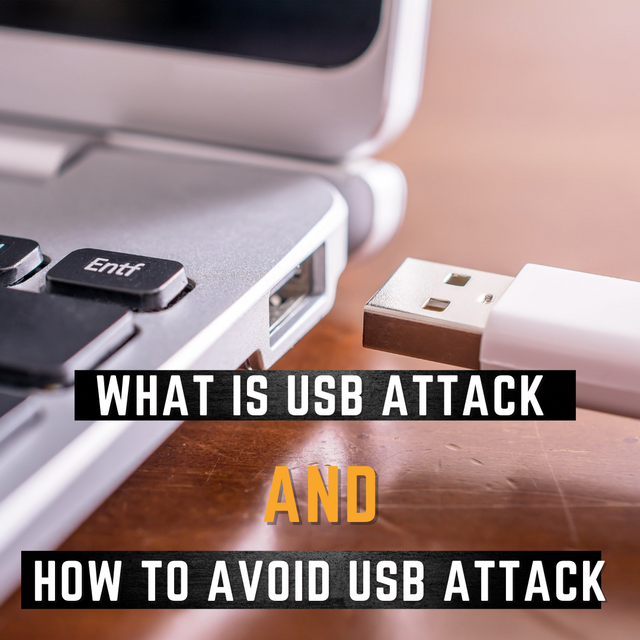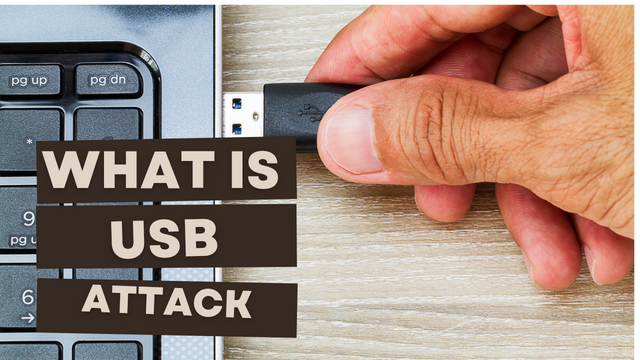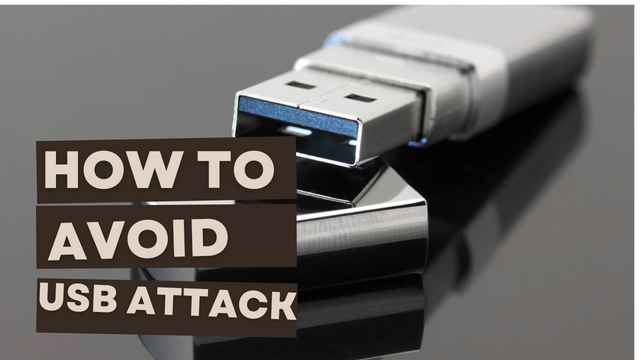What is USB Attack and How to Avoid USB Attacks

In this article I will discuss about What is USB Attack and How to Avoid USB Attack. I hope this post is helpful for you. If you like my article then give a feedback on a comment section. So Lets Get Started!
What is a USB Attack?

A USB plug does pretty much what it says on the box: it uses a USB-connected device, such as a thumb drive or hard drive, to introduce malware into a computer or other USB-connected device. such as a smartphone. Faulty USB devices can also be used to damage or destroy a computer by supplying an electrical charge.
One of the most troubling aspects of USB attacks is their ability to give hackers remote control of a system. The Stuxnet attack discovered in 2010, for example, Iranian nuclear development sites known to be infected. The same kind of flaws could be used to infiltrate facilities connected to the power grid, oil production, and other Internet of Things networks.
There are dozens of ways for a cyberattacker to use a USB flash drive to install an exploit on your computer. The two most common are through thumb drives and public USB charging ports, a practice known as juice jacking.
Attacks on USB devices fall into three main categories, depending on what they do once they're connected to your device. Devices with reprogrammed internal microcontrollers will look like regular USB sticks, but when plugged in they will perform another function, e.g.acting as a keyboard and typing certain keystrokes. Examples include the Rubber Ducky attack.
USB devices with reprogrammed internal firmware are modified so that their firmware automatically performs a certain function when connected, such as installing malware or stealing data. An example of this is the iSeeYou attack, which reprogrammed a particular class of Apple webcams so that the attacker could record video without a person's knowledge.
USB attacks also can exploit existing flaws within the method computers and USB devices act. a typical example of this attack is that the Device code Upgrade (DFU) attack, that uses a USB device to reprogram legitimate code into one thing additional malicious.
There are also attacks like the USB killer, where an attached USB device stores energy from a computer's USB power lines until it reaches a certain level, then aggressively discharges it and fry the connected computer.
How to Avoid USB Attacks

Although these attacks sound scary, there are ways to prevent them.
Do not plug in unknown drives
Many USB threats are the result of social engineering or psychological tricks and tactics to trick people into plugging in a faulty device. This is present in almost all types of cyberattacks and scams and it is important not to fall for it.
If you see a USB drive that you don't recognize dropped somewhere, like a parking lot, don't connect it to your computer. Bad actors rely on human curiosity to help them contaminate your device. They'll drop it off in a public place, like a hospital, and wait for someone to connect it. This is called a drop attack.
Another common tactic is to send people USB drives in the mail and make them look like promotional offers from big tech stores like Best Buy. Conclusion: Beware of USB drives you find or receive for free unsolicited, qu 'they come from a company you know or don't recognise.
from your personal computer to the professionals in your union network.You can also regularly scan your USB devices with an anti-virus and/or anti-malware program, while encryption software can prevent attackers from accessing your information within the event of a breach.
If you think you have connected a compromised device to your computer, disconnect from the Internet immediately and restart your computer.
Disable Autorun
Disabling autorun features on your devices will prevent malicious code from running automatically when you plug in a drive. In Windows, open the Control Panel and find the AutoPlay setting.
Uncheck Use AutoPlay. for all media and devices to prevent unknown devices from booting without notifying you or asking permission.
Keep Your Guard Up
No cybersecurity technique is foolproof, which includes steps taken to forestall USB attacks. The ways represented here area unit, however, a full heap higher than plugging in an exceedingly weird USB drive you found and hoping for the most effective.
Remember never to trust unknown drives, scan those you are doing use frequently, and make the most of security choices like passwords, PIN keys, and encryption. Hopefully, awareness of the ways that cyberattackers use not to mention solid hardware and software system security can assist you keep freed from any nasty digital infections.
Don't Ignore Updates
Keep your systems updated, particularly if you’re running Windows. several attackers make the most of the actual fact that folks typically delay change their systems, although they embrace patches for serious bugs.
Thank you for sharing information
Downvoting a post can decrease pending rewards and make it less visible. Common reasons:
Submit
Thanks
Downvoting a post can decrease pending rewards and make it less visible. Common reasons:
Submit
Great topic you select for your post.
Thank you so much for sharing this.
Steemexclusive : Yes
Bit Bot : No
Club5050 : Yes
Plagiarism : No
Downvoting a post can decrease pending rewards and make it less visible. Common reasons:
Submit
Thanks
Downvoting a post can decrease pending rewards and make it less visible. Common reasons:
Submit